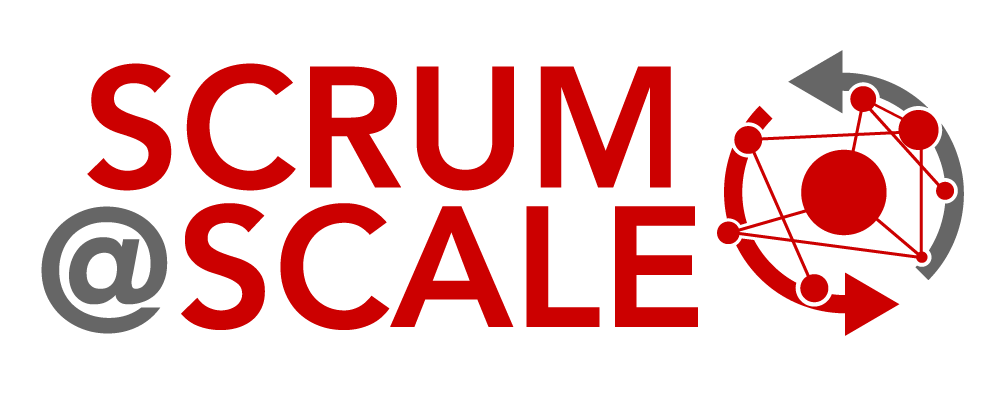Caso práctico Agile Education
Mejorar la Priorización y el Rendimiento: Utilización de Datos de Velocidad Agregados en Scrum@Scale
Este estudio de caso explora cómo se utilizaron los datos agregados de velocidad para mejorar el rendimiento, la priorización y la previsibilidad de los equipos de ingeniería en una startup tecnológica en expansión. Mediante el análisis de áreas clave como la linealidad, la estabilidad, el factor de enfoque y el impacto de los plazos, el estudio revela cómo cambiaron las tendencias de la velocidad de los equipos a medida que la empresa pasó de 10 miembros ubicados en el mismo lugar a 25 miembros en múltiples ubicaciones. Las conclusiones demuestran que, mientras crecía el tamaño del equipo, la velocidad se ralentizaba debido a las dependencias entre equipos y a la disminución de la disciplina en las prácticas Scrum y Agile, pero la agregación de datos ayudó a priorizar las tareas y a gestionar eficazmente el backlog del producto. En última instancia, este enfoque permitió tomar mejores decisiones, equilibrando la innovación con las exigencias de los plazos y la sostenibilidad a largo plazo.
RESUMEN DEL ESTUDIO DE CASO
Trainer Nombre: Rob Frohman
Industria: Desarrollo de software
Tamaño de la organización: Pequeño
Tema: Práctica Ágil, Entrega y Velocidad, Equipos Distribuidos, Impulsar la Innovación y la Creatividad, Priorización
La fecha: 2020
Sitio web: https://www.co8group.com/
LinkedIn: https://www.linkedin.com/in/robertfrohman
Estudio de caso
Resumen: Mejorar la priorización y el rendimiento: Utilizando Datos de Velocidad Agregados en Scrum@Scale
Este caso práctico sigue al coach ágil Rob Frohman en su viaje de trabajo con una startup lean dentro de una gran empresa tecnológica. En los dos primeros años, el equipo pasó de 10 miembros ubicados en el mismo lugar a 25 miembros repartidos en tres ubicaciones geográficas, lo que brindó la oportunidad de observar cómo escala un equipo con el tiempo. La medición de la linealidad, la estabilidad, el factor de concentración y el impacto de los plazos durante un periodo de 2,5 años proporcionó valiosas perspectivas sobre cómo velocidad Los datos pueden agregarse en todos los equipos para mejorar la priorización y el rendimiento, lo que en última instancia conduce a una mejor toma de decisiones, transparencia y previsibilidad.
Superar los retos
A medida que los equipos de ingeniería se ampliaban y se distribuían por distintas ubicaciones, se esforzaban por mantener una velocidad y una concentración constantes. Al principio, los equipos superaron las expectativas de rendimiento. Con el tiempo, las prácticas Scrum y Agile se volvieron menos disciplinadas, los plazos añadieron más presión y crecieron las interdependencias entre los equipos, todo lo cual afectó negativamente a la productividad. Además, los equipos tuvieron dificultades para equilibrar lista de productos pendientes trabajar con la infraestructura y la resolución de defectos. El reto consistía en agregar datos de todos los equipos para comprender mejor sus tendencias colectivas de velocidad, tomar decisiones informadas y mejorar el rendimiento general.
Áreas clave de medición
Linealidad
Una hipótesis inicial habitual es que aumentar el tamaño del equipo incrementará directamente la productividad. Sin embargo, los datos recogidos demostraron que no era así. Aunque los equipos superaron las expectativas al principio, la velocidad disminuyó con el tiempo. En última instancia, las razones clave fueron la mayor dependencia entre los equipos, los plazos inminentes y la disminución del rigor de las prácticas. Sin duda, la expectativa de que duplicar el tamaño de los equipos duplicaría el rendimiento del trabajo quedó desacreditada.
Estabilidad
Rob sabía que las velocidades de los equipos individuales pueden variar más de 50% sprint-a-sprint. Tenía curiosidad por ver qué mostraban estos datos desde la perspectiva de un grupo más amplio. En consecuencia, sumó las velocidades de cinco equipos a lo largo de varios trimestres para evaluar su estabilidad. A lo largo de 7 trimestres, los equipos alcanzaron sistemáticamente alrededor de 1.250 puntos de historia por trimestre, con sólo una variación media de 10%. Inmediatamente, estos datos resultaron cruciales en la planificación a más largo plazo. Si, al planificar el trimestre siguiente, el backlog priorizado contenía 1.800 puntos de historia, podían argumentar con confianza que era inalcanzable en el trimestre siguiente basándose en los datos históricos. Este conjunto de datos les ayudó a demostrarlo y les permitió cambiar el enfoque para negociar las prioridades.
Factor de enfoque
El factor de enfoque midió la asignación de la capacidad del equipo entre la cartera de pedidos del producto, el trabajo de infraestructura y la resolución de defectos. Aunque 50% de la capacidad del equipo se destinaron al backlog del producto, los otros 50% se dividieron entre infraestructura y resolución de defectos. La velocidad del equipo fluctuaba significativamente de Sprint a Sprint, una métrica que se destacaba cada semana durante su revisión operativa. En lugar de ver esta variabilidad como un problema, Rob la consideró un indicador de fluidez e innovación. Este equipo en concreto estaba haciendo un trabajo muy innovador, y querían que los equipos superaran los límites y "explotaran" más o menos una vez cada seis Sprints. En lugar de esforzarse por alcanzar una tasa de variabilidad de 0%, buscaban estar más en línea con una variabilidad de 15% entre Sprints.
Impacto de los plazos
Los plazos tuvieron un impacto notable en la velocidad del equipo. A medida que se acercaban las principales fechas de lanzamiento, la velocidad del equipo aumentaba hasta 50%. Tras el lanzamiento, se produjo una caída, y la velocidad tardó una media de seis sprints en volver a los niveles normales. Esta inconsistencia en el rendimiento afectaba a la previsibilidad y contribuía al agotamiento del equipo. Comprender estos picos y valles ayudó a Rob y al equipo directivo a planificar mejor y gestionar las expectativas.
Puntos clave
- Previsibilidad mejorada: La agregación de datos de velocidad permitió a los equipos predecir su capacidad con mayor precisión. A lo largo de 6-7 trimestres, mantuvieron una velocidad media de 1.250 puntos de historia con un margen de error de 10%. Esto permitió una mejor planificación y priorización.
- Toma de decisiones basada en datos: Al utilizar los datos históricos de velocidad, los equipos podían presentar argumentos más sólidos para ajustar la cartera de productos pendientes y establecer objetivos más realistas. El conjunto de datos se convirtió en una herramienta esencial para negociar y garantizar la concentración en las tareas más importantes.
- Concéntrate en la fluidez, no en la perfección: En lugar de esforzarse por conseguir una variabilidad cero, los equipos aceptaron cierto nivel de imprevisibilidad como parte del proceso de innovación. Este enfoque les permitió equilibrar el desarrollo del producto con el trabajo necesario de infraestructura y resolución de defectos, lo que en última instancia condujo a un progreso más sostenible.
- Comprender el impacto de los plazos: Los equipos aprendieron a anticiparse a los efectos de los próximos lanzamientos, ajustando sus expectativas y la asignación de recursos para evitar el agotamiento y mantener la productividad a largo plazo.
Conclusión
Este estudio de caso pone de relieve el valor de los datos de velocidad agregados para gestionar y escalar los equipos de ingeniería. Al centrarse en métricas clave como la linealidad, la estabilidad, el factor de enfoque y el impacto de los plazos, los equipos pudieron mejorar la priorización y el rendimiento. La experiencia de Rob subraya la importancia de utilizar los datos de velocidad como una herramienta para la transparencia y la toma de decisiones, en lugar de como un objetivo rígido que alcanzar. Este planteamiento permitió a los equipos mantener la innovación, cumplir los plazos y reducir el agotamiento, ofreciendo un modelo de éxito en un Scrum@Scale medio ambiente.
Sobre Rob Frohman
Rob Frohman es un coach y profesional de Agile empresarial especializado en transformación organizativa. Tiene una amplia experiencia en el desarrollo de software y productos, desde equipos, pasando por empresas de nueva creación, hasta el nivel empresarial. Para Rob, se trata de encontrar el equilibrio pragmático entre las personas y el proceso para desarrollar soluciones empresariales elegantes y valiosas, divirtiéndose un poco al mismo tiempo.
Más estudios de caso del Scrum@Scale
Entrega a tiempo en logística: Una historia de Scrum
Mejorar los flujos de trabajo ágiles con ciclos de planificación más cortos
El éxito de una startup remota: De la extinción de incendios a los resultados
Agile Education Estudio de caso Éxito de una startup remota: De la extinción de incendios a los resultados Este caso práctico se centra en una startup remota que se enfrentaba a retos con flujos de trabajo desorganizados, agotamiento del equipo y falta de una visión clara del producto. La startup no tenía Product Owner, lo que...



